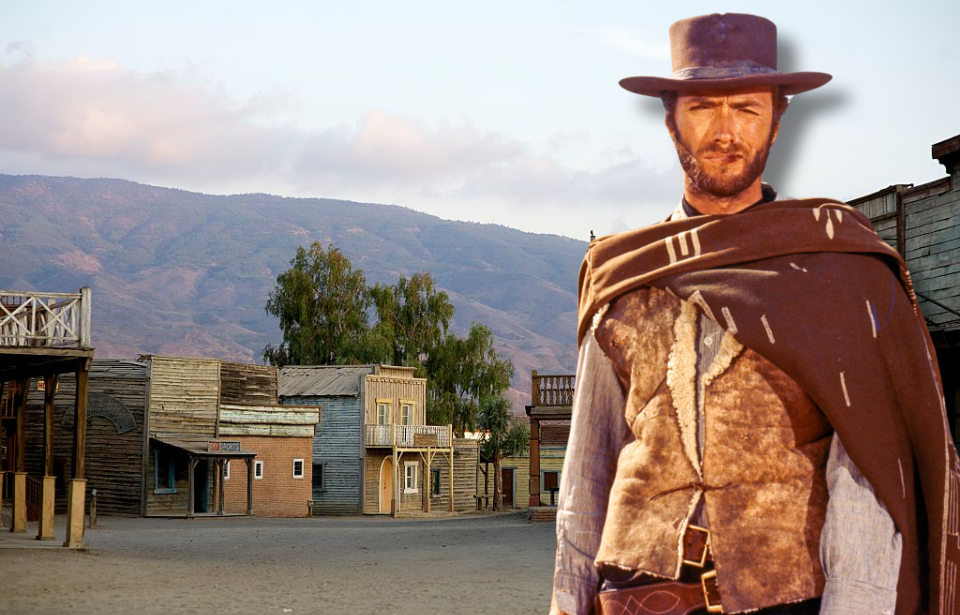Films have a unique way of creating magical experiences, which is why we’re so drawn to them. Most of us never think about what goes on behind the scenes, and many don’t even care. But here’s the thing: we should! The sets and locations in classic movies are a key part of that magic and, sometimes, they’re left behind when the cameras stop rolling and the crew members have departed.
Here are some incredible spots where filmmakers brought their stories to life… And then moved on.
Matamata-Piako District, New Zealand – The Lord of the Rings
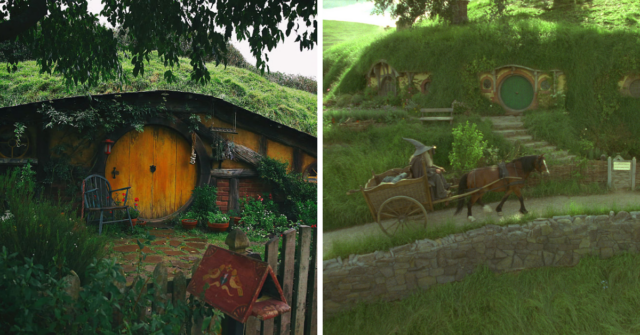
It’s well known that The Lord of the Rings trilogy (2001-03) brought New Zealand into the global spotlight. Of course, it was already on the map, but, for many, Peter Jackson’s epic was their first real glimpse of the country’s breathtaking landscapes.
Jackson and his team expertly transported audiences to JRR Tolkien’s Middle-Earth. When filming wrapped, some of that world remained. One such place is Hobbiton, in the Matamata-Piako District of Waikato. This charming land of the Hobbits is part of a working farm, where visitors can explore the meticulously crafted Hobbit holes created for the movies.
Interestingly, the location was prepared a full year before Jackson began shooting. As noted on IMDb, the producers wanted the grass to grow naturally, ensuring the setting looked authentic, rather than freshly constructed by set builders.
Almería, Spain – The Good, the Bad and the Ugly
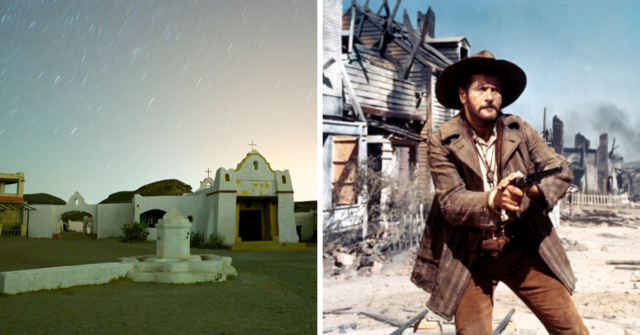
Few films embody the essence of a Spaghetti Western quite like Sergio Leone’s “Dollars” trilogy, with The Good, the Bad and the Ugly (1966) serving as its epic finale. Starring Clint Eastwood, Lee Van Cleef and Eli Wallach, it transported audiences to the gritty heart of the American West. But here’s a little secret… Many of these classic Westerns were actually filmed around Almería, Spain, taking full advantage of its dusty, rugged landscapes.
The shoot, however, was far from safe. Wallach, who played Tuco, found himself in dangerous situations more than once. He was dragged by a runaway horse with his hands tied behind his back, accidentally drank acid from a soda bottle and narrowly avoided being decapitated by a train!
The making of these films was nearly as perilous as the action you see on screen. Thankfully, tourists today can explore the iconic locations without any of the hazards that once plagued the cast.
Sweethaven Village, Malta – Popeye
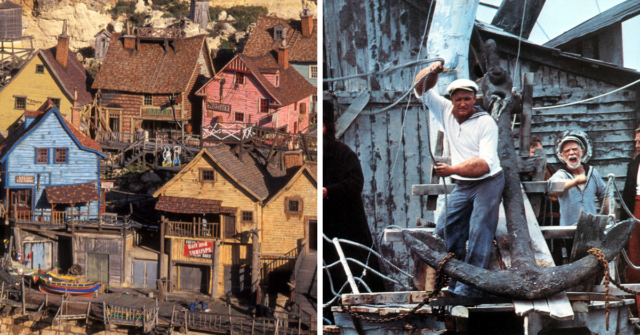
The live-action adaptation of Popeye (1980), directed by Robert Altman and starring Robin Williams and Shelley Duvall, may have cost millions, but it remains a somewhat obscure film. Altman and Williams, both known for their unconventional styles, created something unique with this project, based on characters by EC Segar.
The picturesque Anchor Bay in Malta was chosen to bring Sweethaven to life, where Popeye meets his beloved Olive Oyl and faces off against his nemesis, Bluto. With the stunning Mediterranean backdrop, the stage was set for a blend of action, adventure and music by Harry Nilsson.
While production was reportedly challenging, when Altman and the crew wrapped up, the meticulously crafted Sweethaven was left behind. Boats were even deliberately sunk to give the location an authentic, salty maritime feel. Today, it’s known as Popeye Village and serves as a tourist attraction – and no, they don’t actually make you eat spinach to get in!
Hotel Sidi Idriss, Tunisia – Star Wars
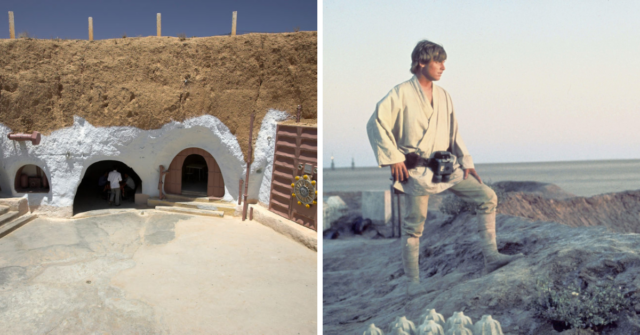
A long time ago, in a galaxy far, far away… Actually, it was Tunisia. George Lucas’ iconic space opera hardly needs an introduction, but one of its most memorable locations was set on Earth, in an ancient desert.
In the town of Matmata lies the Hotel Sidi Idriss, known to Star Wars fans as the Lars Homestead from Episode IV: A New Hope (1977). This is where we first met Luke Skywalker and his kin, as they went about their daily lives on Tatooine, buying droids and racing landspeeders.
As reported by The Guardian, the structure was originally a Berber troglodyte house, and Lucasfilm returned to the location for additional filming in later instalments, including Episode II: Attack of the Clones (2002). With the franchise still continuing to thrive after decades, the area should continue to draw a steady stream of visitors from Earth.
Dixie Square Mall, Chicago, Illinois – The Blues Brothers
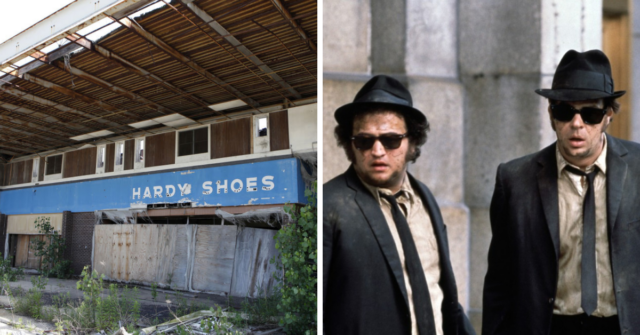
While Robin Williams was busy playing Popeye, fellow comedians Dan Aykroyd and John Belushi were causing their own kind of chaos. Teaming up with director John Landis, they brought the unforgettable characters of Jake and Elwood Blues to life in The Blues Brothers (1980).
Movie-making isn’t always glamorous, as shown by one of the film’s key locations: the run-down Dixie Square Mall in the Chicago suburbs. This is where the Blues brothers famously went “shopping” in their car, creating a chaotic scene of automotive mayhem. The production set a world record at the time by totaling an astonishing 104 cars.
The mall itself had been closed since 1978, but its involvement in the film turned it into a legal headache. Universal Pictures faced a lawsuit for $87,000 after allegedly reneging on a promise to restore it to its original state – a near-impossible task after Jake and Elwood were done with it!
More from us: 30 Abandoned Places Across the United States That Send Shivers Down Our Spines
Want to become a trivia master? Sign up for our Today In History newsletter!
Unlike some of the other locations on our list, Dixie Square Mall no longer exists. It stood until 2012, before being demolished.
